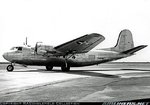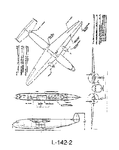KiwiBiggles
Senior Airman
A discussion in another thread about the characteristics of the Ju 52/3m vs Ju 252 vs C-47 lead me to thinking about just how different WW2 transport aircraft look compared to those of today. Nowadays it seems obvious that a military transport should have a high wing, an upswept rear fuselage with a loading ramp, and very short undercarriage tucked into the side of the fuselage. But, the Ar 232 aside, until the C-123 came along in the late 40s, all military transports, even purpose-designed ones, followed the general layout of most other aircraft.
So, was there any reason why the now-standard pattern for a military transport couldn't have been use earlier? The benefits seems self-evident. You only have to look at the much-publicized picture of a jeep being tortured into the side cargo door of a C-47 to realize how much better is a low horizontal fuselage with a rear ramp.
As an aside, can anyone think of any other class of aircraft where such an increase in utility came about through a change in design, not an advance in technology?
So, was there any reason why the now-standard pattern for a military transport couldn't have been use earlier? The benefits seems self-evident. You only have to look at the much-publicized picture of a jeep being tortured into the side cargo door of a C-47 to realize how much better is a low horizontal fuselage with a rear ramp.
As an aside, can anyone think of any other class of aircraft where such an increase in utility came about through a change in design, not an advance in technology?


